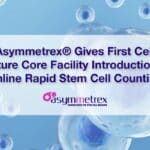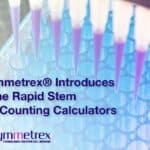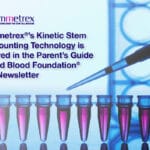Asymmetrex Launches a Crowdsourcing Campaign to Introduce New Biomarkers for Counting Previously Elusive Tissue Stem Cells
To go directly to the Asymmetrex crowd description page, click here.
Stem cell medicine technology start-up company Asymmetrex, LLC faces the unusual challenge of wishing to evaluate its new biomarker technologies, developed to count tissue stem cells for the first time, in hundreds of different tissues. To meet this challenge, Asymmetrex is launching a crowdsourcing campaign to accelerate the introduction and practice for its first-of-a-kind technologies for detecting and counting tissue stem cells directly.
Boston, MA (PRWEB) April 29, 2015
Generally speaking, tissue stem cells, which are under intense biomedical investigation and are essential for cell transplantation therapies, are elusive. The problem is not that they are invisible or even that they are so scarce in human tissues and organs. The problem is that, so far, it has been impossible to physically distinguish them from other more abundant tissue cells.
The way scientists detect and count particular kinds of cells is by using microscopes and other magnifying instruments to see features, called biomarkers, that are either unique or highly specific to the cells of interest. For example, red blood cells have a combination of size, shape, and bright red color that is not shared by other cells in the body. Employing these red blood cell biomarkers, scientists and physicians have no trouble identifying and counting red blood cells. These capabilities greatly enhance the capacity to conduct red blood cell research, diagnose red blood cell diseases, and treat patients with exact doses of red blood cell transfusions.
Unlike red blood cell biomarkers, the best available physical markers for tissue stem cells are notorious for lacking sufficient specificity to identify the cells. In cell preparations displaying these quasi-markers, often less than 1% of the cells with the markers are actually tissue stem cells. This poor degree of specificity is inadequate for direct identification and counting. So, in fact, the most effective tissue stem cell treatment in current medical practice, bone marrow stem cell transplantation, is performed without knowledge of the exact number of stem cells transplanted. So, even this common stem cell treatment could be improved greatly, if tissue stem cell-specific biomarkers were available.
An important portion of the intellectual property portfolio of Asymmetrex addresses this long-standing unmet need for tissue stem cell biomarkers that can identify and count tissue stem cells. Asymmetrex’s technologies were developed using a different strategy than previous investigators who tried to purify scarce tissue stem cells to investigate them for specific biomarker properties. As for red blood cells, whose noted biomarkers reflect their unique function in the body for carrying oxygen through microscopic blood capillaries, Asymmetrex focused its development of biomarkers on properties responsible for the unique functions of tissue stem cells.
Asymmetrex’s tissue stem cell biomarkers detect the cells’ highly unique cell division and chromosome sorting properties. Since no other cells in the body share these properties, Asymmetrex predicts that its unique class of biomarkers has sufficient specificity to identify and count tissue stem cells in and from many different organs and tissues.
An initial published report from the company that describes its most convenient tissue stem cell biomarker, supports its prediction. The biomarker, called “H2A.Z asymmetry,” which requires contact with only two commercially available antibodies, identified and counted tissue stem cells in several different tissue cell contexts.
Asymmetrex director James Sherley is excited to see H2A.Z asymmetry evaluated widely and as soon as possible. “Quite frankly, the usual approach of waiting to let a new needed technology like this one trickle into general application would be irresponsible. We need to know yesterday how robust H2A.Z asymmetry might be in many hundreds of different human tissues. And if it isn’t going to be very strong, the sooner Asymmetrex finds out…the better.”
Sherley now has the idea that crowdsourcing is the obvious solution to this unusual biotechnology development challenge. So, starting today on April 29, Asymmetrex is launching a social media campaign to encourage a broad audience of cell biologists, stem cell biologists, tissue cell biologists, tissue engineers, physicians, and biotechnologists to evaluate the H2A.Z asymmetry biomarker in their research, development, and clinical studies.
The company is still refining the specific operations of the crowdsourcing effort, which are likely to evolve as the year progresses. For example, in the long run without any direct input from Asymmetrex, reports and publications on the experience with the H2A.Z asymmetry biomarker would alone establish its utility and define its range of tissue applications. However, the company may set up a webpage where early users can post their results and questions as they occur. Although Asymmetrex does not plan to organize such information into a more accessible format, based on the success of this approach, the company does plan to partner with antibody producers, other development partners, and marketing partners to develop its patented tissue stem cell detection and counting technologies for even more widely available commercial kits, protocols, and consulting services.
About Asymmetrex
Asymmetrex, LLC is a Massachusetts life sciences company with a focus on developing technologies to advance stem cell medicine. Asymmetrex’s founder and director, James L. Sherley, M.D., Ph.D. is an internationally recognized expert on the unique properties of adult tissue stem cells. The company’s patent portfolio contains biotechnologies that solve the two main technical problems – production and quantification – that have stood in the way of successful commercialization of human adult tissue stem cells for regenerative medicine and drug development. In addition, the portfolio includes novel technologies for isolating cancer stem cells and producing induced pluripotent stem cells for disease research purposes. Currently, Asymmetrex’s focus is employing its technological advantages to develop facile methods for monitoring adult stem cell number and function in clinically important human tissues.







Leave a Reply